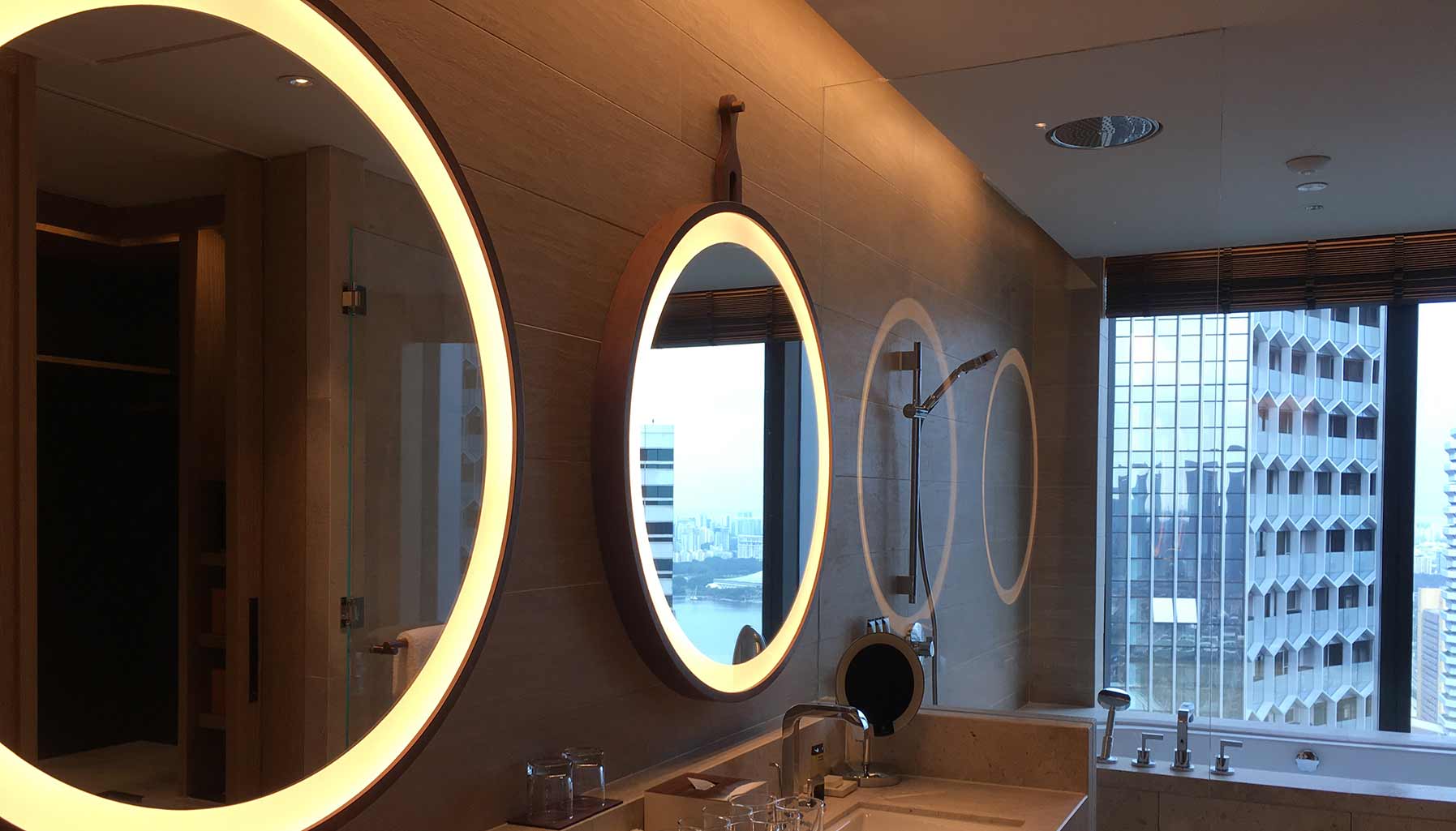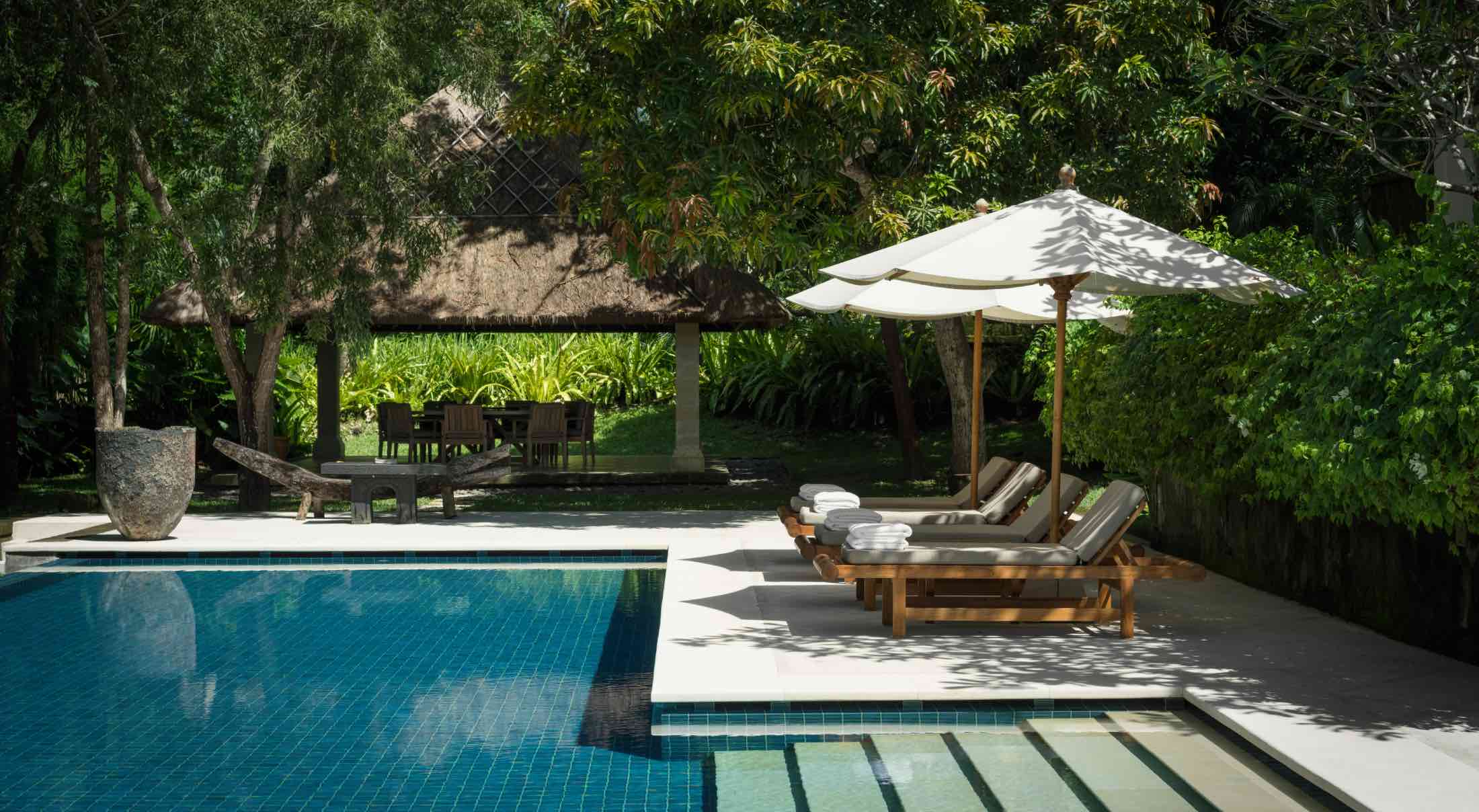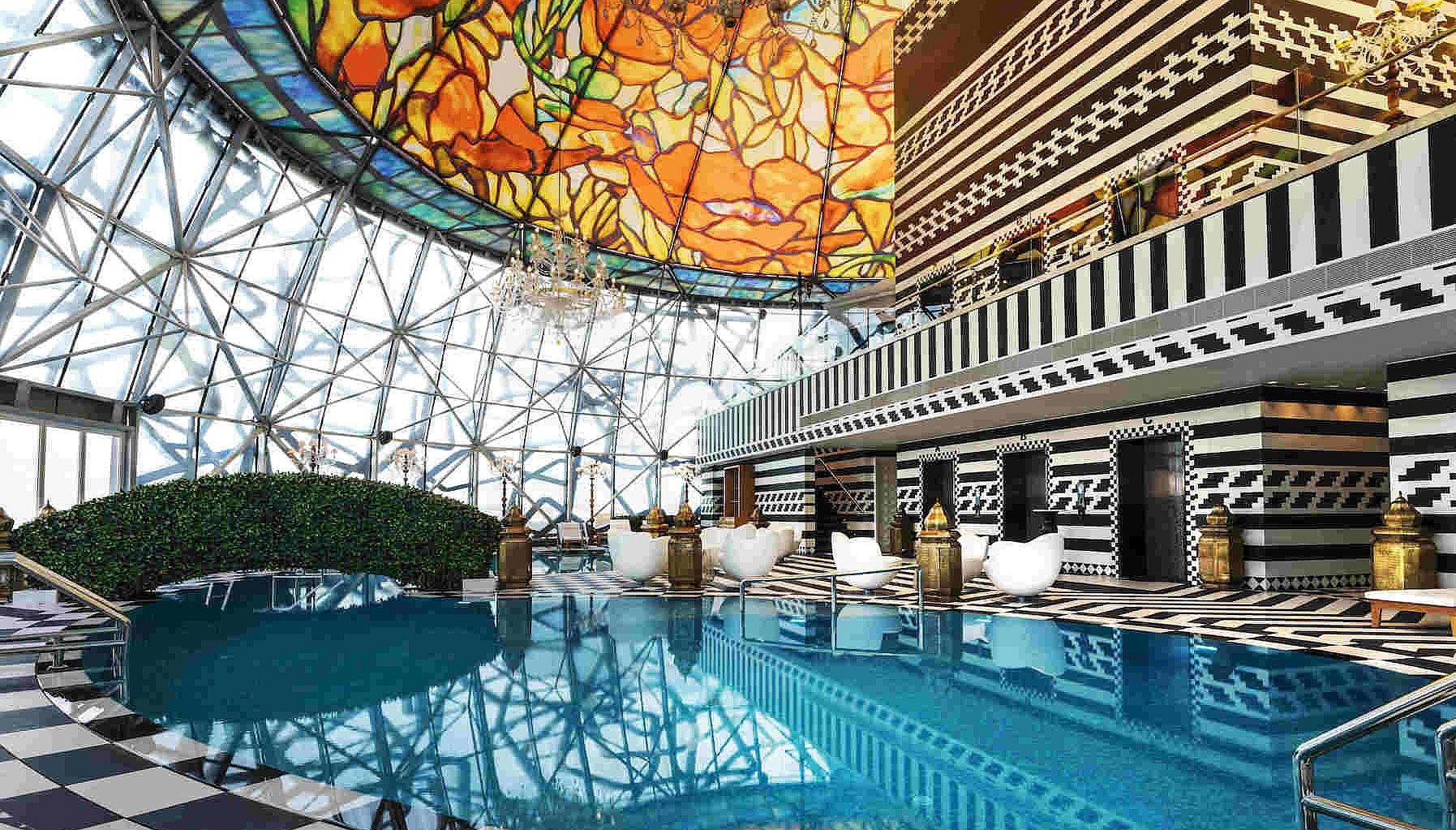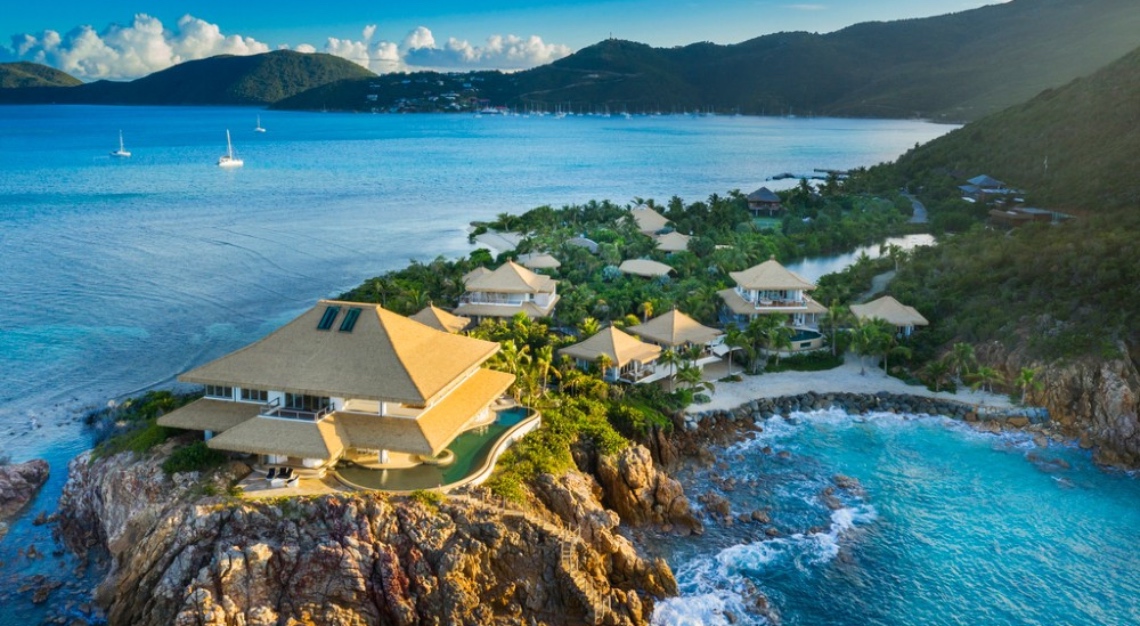How hard is it to turn a breathtakingly beautiful tropical isle into the next super-luxe destination? Experts explain
“Fine, then. Who needs Mustique? I can do better,” he said—or something close. The Italian businessman flounced out of a meeting on the Caribbean’s most exclusive island after its management company nixed plans for a five-bedroom mansion he wanted to build. Undeterred by the denial, he resolved he would out-Mustique Mustique.
As a canvas, he turned to Canouan, a tiny nearby island that is part of the same nation, St. Vincent and the Grenadines. Canouan is around 24km south, and at that time—the early 1990s—it was inhabited by fewer than a thousand people, mostly subsistence fishermen. It had no running water, paved roads or cars. But the Italian believed he could change that, thanks to a vast fortune he accrued in banking; he would go on to sink a serious chunk of it into reimagining this gorgeous but undeveloped island into the ultimate gesture of one-percent one-upmanship. He envisaged a true hideaway. As a maxim that many islanders now repeat, smiling slightly, it would be where the billionaires could go to escape the millionaires. By which, of course, he meant the parvenus of Mustique.
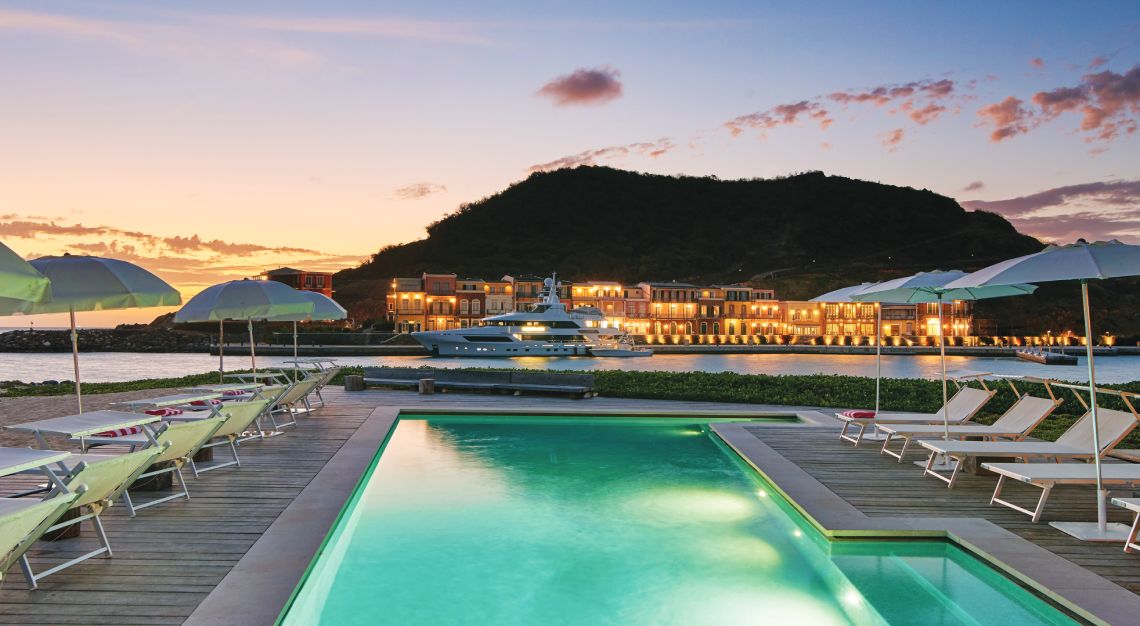
At least, that’s the origin story most locals on Canouan tell. When that Italian banker, Antonio Saladino, secured a 99-year lease for two-thirds of the island three decades ago, he may have been looking beyond the British-boosted island next door. “He wanted to make it the next Portofino,” in the opinion of one longtime resident.
But Elena Korach challenges that assumption. She worked for Saladino at the outset and helped devise the masterplan for Canouan. Korach recalls that it was the country’s then-prime minister, the late James Fitz-Allen Mitchell, who encouraged the Italian developer to pump his wealth into a second island after the Mustique snub. Saladino’s vision here wasn’t to replicate Italy, by her telling. “We wanted to take inspiration from beautiful ports like that, but for Canouan to have its own character, one that would withstand the test of time,” she says. (A representative for the now-retired Saladino did not respond to multiple requests for comment.)
It was a massive undertaking, and one with ambitions that are yet to be fully realised. Indeed, Canouan has passed through several incarnations since launching as a new jet-set getaway in the late 1990s. Saladino’s first attempt sputtered. He reasoned it was due to a lack of publicity, so opted to import a showman hotelier to help with its relaunch. Donald Trump lent his headline-grabbing name to a new golf course and casino, among other things, as part of a spate of fresh investment. But Canouan 2.0, aimed more deliberately at wealthy American families in the early 2000s, failed to take off, too. By then, Saladino had stepped back. He eventually deeded completion of his vision to two deep-pocketed businessmen, one Italian and the other Irish. Their approach to the island and its inhabitants—both locals and incomers—contrasts sharply. Welded together in what observers characterise as an uneasy alliance, they’re readying to relaunch Canouan yet again—this time, emphasising its appeal to the superyacht set. Can it be third-time lucky?
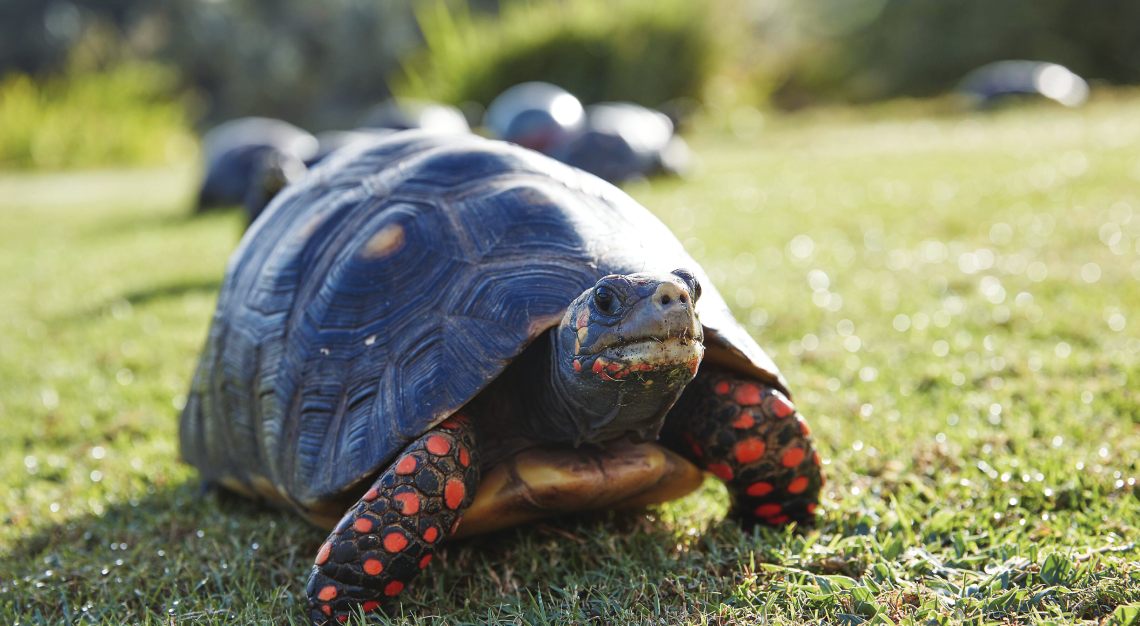
There are plenty of positive indications. Mention the name Canouan in certain company and wait for a flicker of recognition: Those who know it will smile subtly, as if privy to the password for a secret club. The appeal is obvious. For starters, its location is ideal: Just below the hurricane belt, it’s rarely troubled by storms, allowing construction in precarious places with unparalleled views. It remains immaculate. The impact of Saladino’s investments is still evident—there are even street-lights in the woods. “We used to call him our godfather,” says Alisha Ollivierre, who moved here from Trinidad 13 years ago and now runs one of Canouan’s best bars, Scruffy’s. The island’s raw landscape is jaw-dropping. Views from a hike to its highest peak, Mount Royal, gaze out over lush forest, edged with white-sand beaches. It’s small enough, too, that a golf cart is as handy as a car. Just keep an eye out for the turtles, which are so commonplace they gave the place its name—Canouan means “island of turtles” in dialect here—and they dawdle on roads, basking in the sun.
What truly confers such cachet on Canouan, though, is its deliberately discreet profile, and its isolation, both of which have so far kept it resoundingly paparazzi-free. Staying under the radar has primed the island to be a literal celebrity hideout; the arrival of Soho Beach House, the members club’s first Caribbean outpost, which opened last year on a sheltered bay, burnishes that sheen. “They don’t have to deal with the stardom because they can feel just like everybody else here,” says one local, noting that George Clooney, Matt Damon, Don Cheadle and Cindy Crawford have all recently stayed in villas, while another resident spotted Leonardo DiCaprio playing volleyball on the beach. Robert Downey Jr. opted to moor his yacht instead—now possible thanks to yet another manmade upgrade: a 120-slip, US$250 million marina that opened here five years ago.
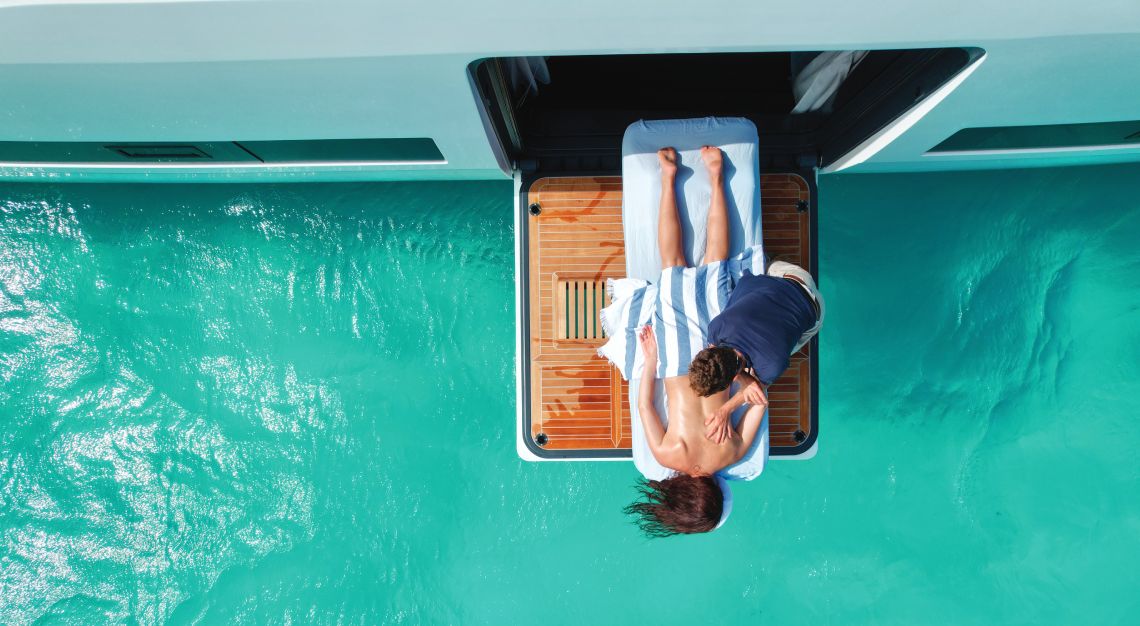
One longtime visitor, whose family was among the first to buy a home built by Saladino, is irked that Canouan hasn’t dislodged its better-known neighbour from its perch atop the jet-set circuit.
“You have a runway for super jets, a marina for megayachts, which cost a fortune to build and were made to perfection. The infrastructure here is mind-blowing compared to any other island.”
At least, it is now. Saladino always intended to appeal to the international jet class, those billionaires who found Mustique rather beneath them. Alongside villas in a development now known as Canouan Estate, he built a splashy resort on Carenage Bay, dragooning hotelier Rosewood into operating it at first. Several reboots later, the site is now the Mandarin Oriental. The only problem was getting enough people there. The runway was too short for long-haul private jets, and commercial service was spotty—mostly a puddle jumper operated by American Eagle a few times a week. The Rosewood struggled to hit 30 per cent occupancy in low season, according to executives who worked there in that era, and rarely more than 70 per cent over the December holidays, usually the peak.
These problems prompted Saladino’s pivot to Trump and co., who were brought in in 2003 to operate the Tom Fazio–designed golf course and Trump-flagged casino with the hope of sparking business-boosting publicity. The hotel, relaunched as a Raffles, worked directly with American Eagle to bolster service, guaranteeing to compensate for any flight that filled fewer than 25 seats, according to a source involved with the deal. Still, access was too constrained. Eventually, Saladino decided to address the problem head-on, extending the airport runway to almost 1.8km, long enough for a G650 to land. It was a masterful move, and one that has ended up giving some Mustique visitors an up-close glimpse of Canouan. Mustique’s runway is shorter, so many bigger jets ferrying guests there now land on Canouan (others head to Barbados or St. Lucia); no wonder there were almost 40 aircraft jig-sawed together to park here over Christmas 2020. Commercial service to Canouan, though, is spottier than ever: American Eagle no longer flies to the island, so non-charter guests are limited to scouring for seats on one of the regional airlines, such as Grenadine Air, which aren’t even loaded into most travel databases.
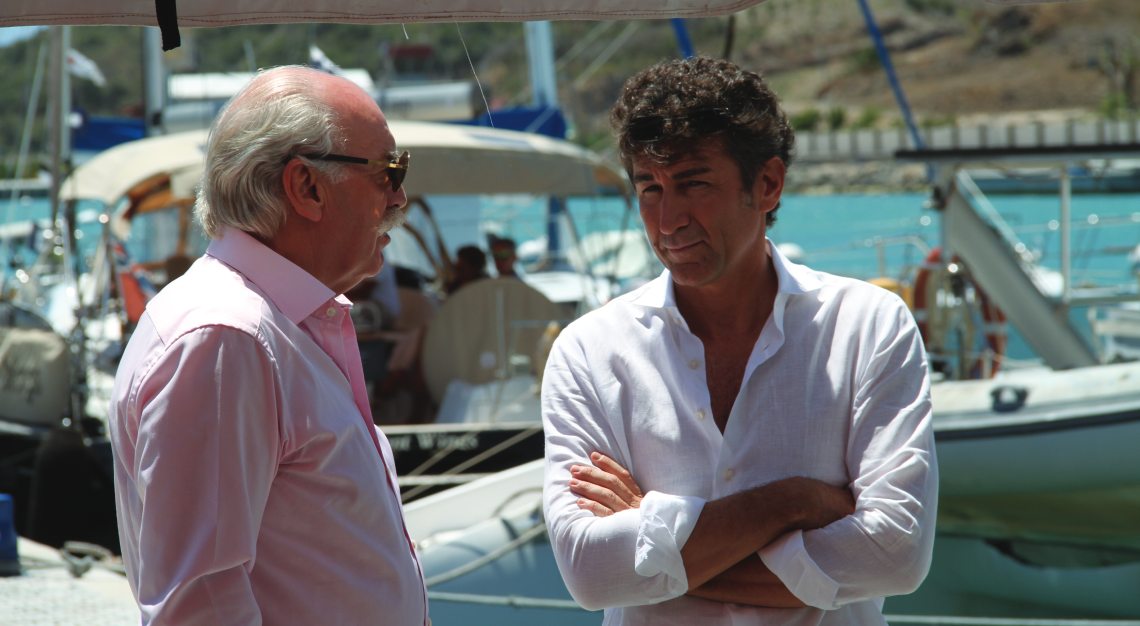
As Saladino finally recognised, Canouan’s true opportunity to snare a share of the most affluent vacationers lay in the yacht market. So he brought in another partner to replace Trump, one who had extensive expertise in that arena. Dermot Desmond is an Irish-born real-estate mogul best known for owning and operating Sandy Lane in Barbados, a resort complex that’s a high-end mainstay, particularly popular with yacht owners who can dock at the nearby marina. Could Desmond clone that scene here? The only problem was that there was no natural harbor in Canouan. Yachts usually rested at anchor in a sheltered bay, an inconvenience that required visitors to tender back and forth.
Elena Korach says that the original plan for Canouan included construction of an artificial marina but on a smaller scale. Desmond, along with Saladino, decided to invest more heavily and create a luxury complex that is twice the size of the 12-hectare site initially planned and can handle boats up to 361 feet. “You’re running after the development of the marine industry, which is constantly increasing the size [of boats],” she explains. Korach, who continues to work on Canouan’s development alongside Desmond, helped him turn a patch of scrubland right next to the airport into a slick marina, shifting 50,0000 cubic metres of earth to make room for restaurants, overnight accommodations in townhouses and other accoutrements. It was this project that helped lure Downey Jr., among others, after it opened as Sandy Lane Yacht Club & Residences.
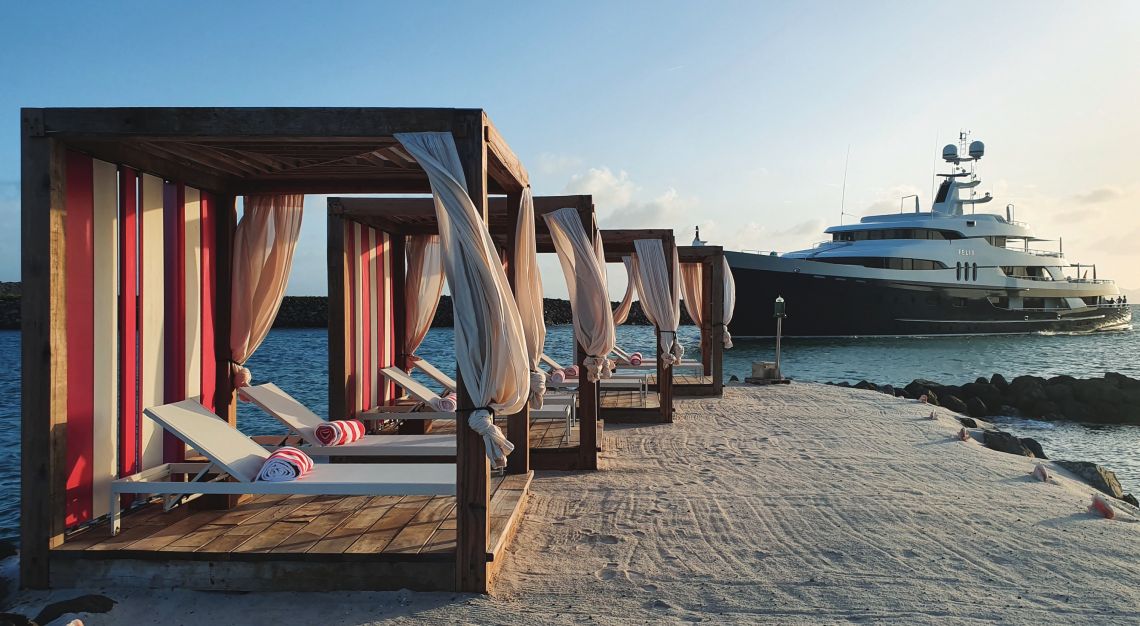
The complex has succeeded in drastically boosting Canouan’s profile in the yachting world. Magnus Lewin, owner of charter firm TradeWinds, moved his operation’s national office here from nearby Bequia in September 2020. “For me, the whole part of the southern Grenadines, yachting, sailing and cruising—it’s such a unique place, an undiscovered part of the Caribbean,” he tells Robb Report. “One of the reasons was because there haven’t been any good facilities for mooring. Without a doubt, this marina is more suited to the kind of clients we’re attracting now, the ones with bigger boats.” TradeWinds’ commitment to the area isn’t fleeting, either: To juice his charter business, Lewin bought four hectares of land close by on Mayreau, a tiny islet in the picturesque cluster known as the Tobago Cays, where he built villas and a beach club, which opened in December.
Desmond’s involvement in the island wasn’t limited to the marina. He also helped overhaul the erstwhile Raffles hotel, rebuilding swathes and relaunching it as the Pink Sands Club. (Fuchsia, one of his favourite colours, appears in all his developments, whether on umbrellas, napkins or logos.) Yet for reasons that remain murky, the partnership between Desmond and Saladino hit an impasse over the operation of Pink Sands. One person involved in the business at the time puts it simply: “Italians have a completely different view of development than, let’s say, the London jet set. There were unbridgeable cultural clashes.”
Desmond plays down any lasting acrimony. “We had a disagreement on the implementation of the development program, but this was resolved through a division of interests,” he tells Robb Report diplomatically. “The Saladino family and I have a good relationship.”
But possibly as a consequence of the falling-out, the Irishman didn’t end up with the remainder of Saladino’s island holdings. Desmond kept control of Sandy Lane and the marina, while Saladino took back the Pink Sands. Saladino then brought in another Italian, Andrea Pignataro, a reclusive, press-shy bond trader who founded fintech Ion Investment Group. Now Desmond and Pignataro would stake their fortunes on Canouan’s future in Saladino’s stead.
At least, that was the plan.
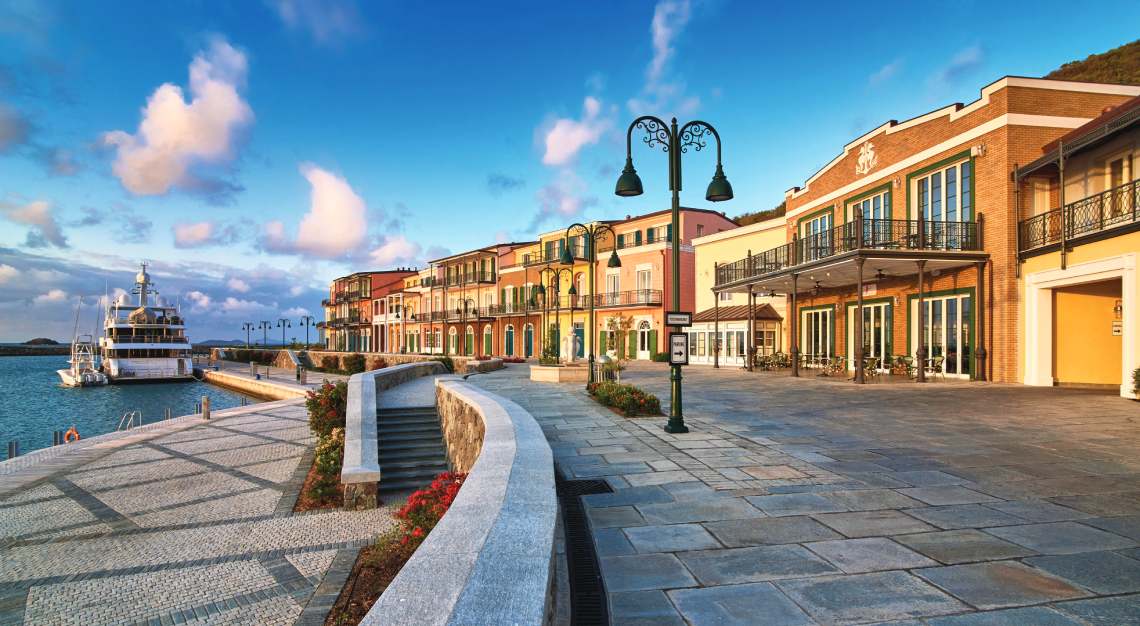
Today the island certainly features all the infrastructure it needs to finally become the jet-set hideaway Saladino pictured 30 years ago. The only obstacle seems to be manmade: dissatisfaction among the ultrawealthy who form the core clientele of Canouan, especially homeowners on the Canouan Estate.
That’s part of the Italian’s territory. “When Pignataro came in, everybody had their hopes on him, because he was very wealthy—he seemed like he was passionate about it,” says one disillusioned international homeowner. “But now if you ask anyone in the community, you will not hear one good thing about him. In his eyes, this is his island, but in the eyes of everyone else, he’s the developer and needs to deliver.” Another agrees. “When he took over, we were dancing in the streets—here was someone who had the genuine desire to make this place into what we all thought it should be, and when he showed us all his plans, we did everything to help him,” that part-time resident says. But, this owner continues, Pignataro’s attitude changed to, “I don’t need to dance with these people anymore.” Some residents of Canouan Estate carp that it’s no longer receiving the investment it needs, with repairs unmade, and so the value of their real-estate holdings is suffering. Says the second disgruntled owner, “I’d like to take a page out in your magazine saying, ‘House for Sale, Best Offer Accepted.’”
At least one lawsuit has been brought against Canouan Estate over this matter; it was unsuccessful. The company declined to disclose sales data, but several sources familiar with the island say property sales have been sluggish, at best. Canouan-born Godfred Pompey, a retired permanent secretary in the national government who is now the island’s official representative, confirms that home sales here have not enjoyed much uplift in recent years, even as transactions in luxury properties worldwide have boomed. “There are limited sales, and it’s something the current government and the developers are trying to iron out, work out how to improve on that,” he says, noting that there are no such problems on Mustique.
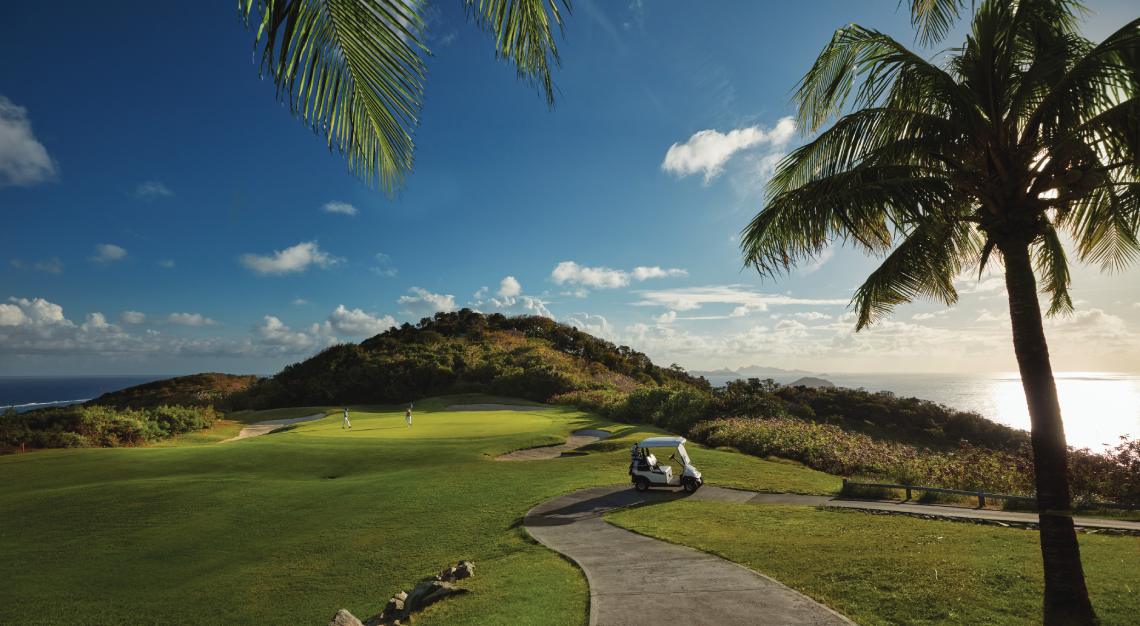
Pignataro, who has never given an on-the-record interview to the English-language media, declined requests for comment. One person who knows both Pignataro and Saladino well has been disappointed to see the troubles that seem to have unspooled since the former took control of the island’s northern half. “He seems to be a very difficult character,” this source says.
Desmond, on the other hand, retains the respect of most of the moneyed homeowners here. “Dermot has gone beyond anyone’s expectations,” notes the second irked homeowner approvingly. Alisha Ollivierre, whose bar is part of the Desmond-owned marina, is also an admirer; Scruffy’s is a place where everyone, whatever their wealth, mingles—and dares to drink a Canouan Crazy or two, its signature cocktail whose secret recipe Ollivierre refuses to disclose (though she hints it’s heavy on vodka and rum). The bar owner is much less complimentary about both Pignataro and the government—and in particular, how the authorities coordinate investment across the island.
She points to the local village. “Have you seen what it looks like? It’s culture shock between these beautiful resorts,” she says, querying why the money splashed out has failed to fully trickle down to daily life. Ollivierre tells Robb Report she’d participate in public protests to spur action. It’s notable that an earlier community activist, Terrance Bynoe, ended up mired in a lawsuit with developers; reached by Robb Report for comment, he says that the settlement terms preclude him from speaking.
The sheltered bay where yachts used to moor is now effectively off-limits; the jetty there is part of Pignataro’s domain and is available exclusively to guests of Soho House, which sits next to it. Other yachters must use the marina—throttling traffic to Ollivierre’s bar and other businesses. She says the impact was palpable during the festive season. “[Pignataro] says no, you can’t go there to even let off crew or guests,” she complains.
As for Desmond, he tells Robb Report that he sees Canouan as his last project, the ultimate embodiment of his development know-how. “I was in Mustique last week, and to me, personally, Canouan is more beautiful and more accessible—[Mustique] doesn’t have a golf course or a marina or an international airport,” he boasts. He continues to pledge time, effort and money to the project, perhaps with an eye toward replicating the deal he struck for London’s City Airport, which he bought for around US$32 million in 1995 before rehabbing and flipping the site for about US$1 billion 11 years later. To bolster the island’s fortunes, he touts the much-discussed rumour that Aman will add a resort here, though many locals shrug that the long-planned site will never be developed, and an Aman spokesperson declined to confirm its approval. Desmond also plans sail-in villas at the marina—there are already docks deep within it, behind which homes could be constructed—with beachfront on the other side.
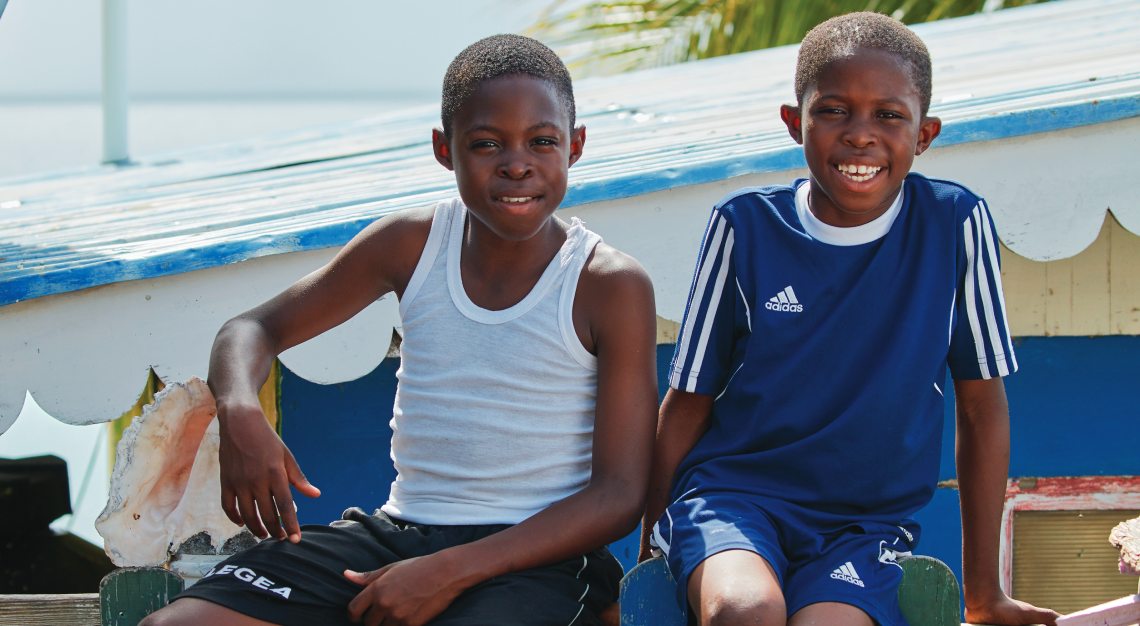
In the immediate future, Desmond says that he and Pignataro are teaming up on their next project: rehabbing the slightly careworn golf course over the next 18 months or so, which technically forms part of Pignataro’s chunk of the island. “I’m meeting with him this morning,” Desmond says one day while speaking with Robb Report by phone from his Barbados base. “The whole redesign is going to make it something exceptional—we want to capitalise on the God-made beauty. No golf course in the world has views as good as this one.” Desmond dismisses any talk of ill will between the two men. “Despite what others might like to believe, Mr. Pignataro and I are both passionate about Canouan and are in discussions regarding a number of projects to be jointly developed,” he insists, adding, “Small island, small talk!”
Desmond hopes that upgrading the golfing facilities will help attract the desired clientele. “I’ve been on islands all around the world, and this is the one that people are going to thank me for,” he says.
At least, that’s the plan.
This was first published on Robb Report USA

